CentoXome® – Turning Years Into Days
It takes approx. 7 years to diagnose a patient with a rare disease. With CentoXome, we can turn those years into days – powered by our best-in-class insights based on superior technology, our extensive clinical experience, and wealth of genetic data in rare diseases.
CENTOGENE’s Enhanced Whole Exome Sequencing Service
Whole Exome Sequencing (WES) is a comprehensive genetic test that identifies changes in a patient's DNA that are causative or related to their medical concerns. By focusing on the entire protein-coding regions of the genome – the exome – WES offers you the coverage you need to diagnose patients rapidly and reliably.
Overcoming the Obstacles of Rare Disease Diagnostics with CentoXome
With more than 7,000 identified rare diseases and approximately 80% being linked to genetic causes, diagnosing rare disease patients can often be difficult – resulting in lengthy, expensive, and emotional diagnostic odysseys.1,2
With WES, this doesn’t have to be the case. Containing the majority (~85%) of known disease-causing changes, WES uncovers the cause of rare diseases in less time and at a lower overall cost – leading to better patient outcomes. With CentoXome, we’ve taken WES to the next level. Enhanced to provide unparallel clinical coverage and diagnostic power in a single test, our product design and medical interpretation utilizes the world’s largest rare disease-centric Bio/Databank containing >31 million unique variants from over 120 countries.
The Results: Diagnosing complex and unsolved patient cases – quicker and with the highest levels of certainty.
Why Choose CentoXome?
Best-in-class insights from the leader & trusted partner in rare disease diagnostics – Turn Our Expertise Into Your Advantage
Superior technology from the experts in omics testing for rare diseases – Turn Your Open Questions Into Answers
Life-long support by a team dedicated to improving the lives of patients with rare diseases – Turn Our Commitment Into Your Promise
Superior Technology With Unmatched Clinical Coverage and Diagnostic Power in a Single Test
CentoXome's design and service delivers the ideal quality and performance from the world leader and trusted partner in rare disease diagnostics, with outstanding clinical coverage and unmatched clinical diagnostic power in a single test. Coupling insights from our extensive and unique rare disease-centric Bio/Databank with superior omics technology, patients and physicians benefit from a unique approach that increases diagnostic yield by up to 20% compared to routine WES3-12 via enhanced coverage of the exome, full mitochondrial genome, and known clinically-associated genes and variants.
Features & Performance | |||||
|---|---|---|---|---|---|
| Broad and uniform exome & mitochondrial genome coverage |
| ||||
| Enhanced coverage of clinically relevant regions |
| ||||
| Advanced and sensitive detection of nearly all types of variants in one single test |
| ||||
SNVs: single nucleotide variants; InDels: small insertions/deletions; CNVs: copy number variations; UPD: uniparental disomy; mtDNA: mitochondrial DNA
*UPD screening is performed using an in-house specific algorithm for the following well-known clinically relevant chromosomal regions: 6q24, 7, 11p15.5, 14q32, 15q11q13, 20q13 and 20
**CNV detection software has a sensitivity >95.0% for all homozygous/hemizygous and mitochondrial deletions, as well as heterozygous deletions/duplications and homozygous/hemizygous duplications spanning at least three consecutive exons
***Variants with low quality and/or unclear zygosity are confirmed by orthogonal methods (i.e., SNVs and InDels by Sanger sequencing; CNVs by Multiplex ligation-dependent probe amplification, MLPA; quantitative polymerase chain reaction, qPCR; or chromosomal microarray, CMA)

When Is WES Recommended?
We recommend WES for complex and undiagnosed cases with suspicion of genetic causes.
WES is conventionally recommended when patients present complex, heterogeneous phenotypes that are suggestive of multiple conditions or are otherwise unclear or atypical. WES may also be recommended when a prior genetic test was unsuccessful. The latest clinical evidence also supports WES as a first-line test when a patient’s symptoms or family history suggests a genetic cause of the diseases. This is especially true for neurodevelopmental disorders, including intellectual disability, global developmental delay, and autism spectrum disorder due to the high diagnostic yield.10, 13 The ACMG (American College of Medical Genetics and Genomics) recommends the use of exome/genome sequencing as first-tier test for children with intellectual disability, developmental delay, or multiple congenital anomalies.14 The test results from WES may also lead to more rapid diagnoses, improved prevention of symptomatic illness, more targeted treatments or even end the need for some costly or invasive procedures.10, 14–17
We particularly recommend CentoXome for patients when:
- Symptoms are very broad, complex, or unspecific, not pointing towards specific disease or typical phenotype
e.g., patients with developmental delay, intellectual disability, autism spectrum disorder, epilepsy - Suspicion of chromosomal imbalances, microdeletion, or microduplication syndromes
e.g., children with global development delay, and/or multiple congenital anomalies, DiGeorge syndrome - Clinical suspicion of mitochondrial disease
e.g., patients with muscular weakness, cardiomyopathy, visual problems - A severe presentation in the neonatal or childhood period
e.g., neonate babies and infants critically ill in Neonatal and Pediatric Intensive Care Units (NICU and PICU, respectively) - Prior genetic testing did not provide a conclusive diagnosis
e.g., patient with neurodevelopmental delay, with similarly affected siblings, and negative testing with microarrays - Need a cost-conscious alternative to Whole Genome Sequencing (WGS)
CentoXome can help you tackle challenging and undiagnosed patient cases across all stages of life and covers a broad spectrum of disorders encompassing >7,000 rare diseases
Relevant Case Studies
Identifying an Intronic Positive Variant With CentoXome
Identifying a Clinically Relevant Mitochondrial Variant
CentoXome MOx Diagnosed Niemann-Pick Disease Type C1
Turning Years Into Days With CentoXome
Tailored Services Paired With Life-Long Support
We offer flexible testing options and additional services to provide a CentoXome analysis tailored to patients’ needs, including WES for ongoing pregnancies with fetal abnormalities for prenatal diagnostics (CentoXome Prenatal). Additionally, we offer an advanced multiomic WES solution, CentoXome MOx, which integrates deep exomic and biochemical insights in a single test to enable early diagnosis, better prognosis, and optimized treatment planning.
Committed to improving the lives of patients with rare diseases, CentoXome is paired with life-long diagnostic support via a free-of-charge and proactive reclassification program, as well as an affordable case-level reanalysis in case of uncertain or negative results. WES diagnostic yield is continuously increasing due to the rapid rate of new gene-disease discoveries, and it is estimated that about 10–20% of undiagnosed patients can be diagnosed by reclassification and genomic data reanalysis.15, 18
Options & Additional Services | ||
|---|---|---|
| Turnaround time | Regular | ≤30 business days |
| Fast | ≤15 business days | |
| Testing design | Solo, Duo, Trio, and Trio PLUS* | |
| Genome wide analysis of structural variants | CentoArray® (chromosomal microarry analysis, CMA) | |
| Raw data | Raw data available free-of-charge for download (FASTQ, BAM, VCF files) along with filtered and annorared variant table (XLS file) for further research | |
| Life-long diagnostic support |
| |
| CentoXome Prenatal |
| |
| CentoXome MOx |
| |
*Solo: only the affected index patient is tested; Duo: index patient and affected or unaffected family member are tested; Trio: index patient and two family members, affected or unaffected are tested; PLUS: additional family member beyond Trio is tested. Mitochondrial genome analysis is performed only for the index patient and maternal samples.
**More details at Variant Reclassification Program
***We do not offer WES-based CNV and mitochondrial genome analysis with CentoXome Prenatal due to technical limitation. More details about Prenatal Testing

Best-in-Class Insights by the Leader & Trusted Partner in Rare Disease Diagnostics
When choosing our WES, physicians, patients, and partners can feel confident that they will receive high-quality sequencing combined with best data analysis and interpretation, documented in comprehensive medical reports. By combining deep phenotype data with genotype data using our advanced bioinformatics pipeline and artificial intelligence (AI), we accurately identify and prioritize disease-causing variants to deliver best-in-class clinical interpretation and reporting.
CentoXome always includes medical reporting based on our clinical interpretation expertise, best-in-class curated variant data from our Bio/Databank, and international best-practice guidelines. A team of highly trained clinical geneticists and scientists interpret the data and cross-check every medical report. All historical high-quality classifications are curated and codified in our rare-disease centric Bio/Databank, which is a reference for diagnostic decisions and classifications. This data repository covers a wide range of ethnicities, unique variant data, and multiomic data from more than 120 countries.
Test reports always contain clear actionable clinical results, recommendations, and follow-up options. They are phenotype-driven and focused on reporting findings related to the patient’s clinical presentation/patient’s indications.
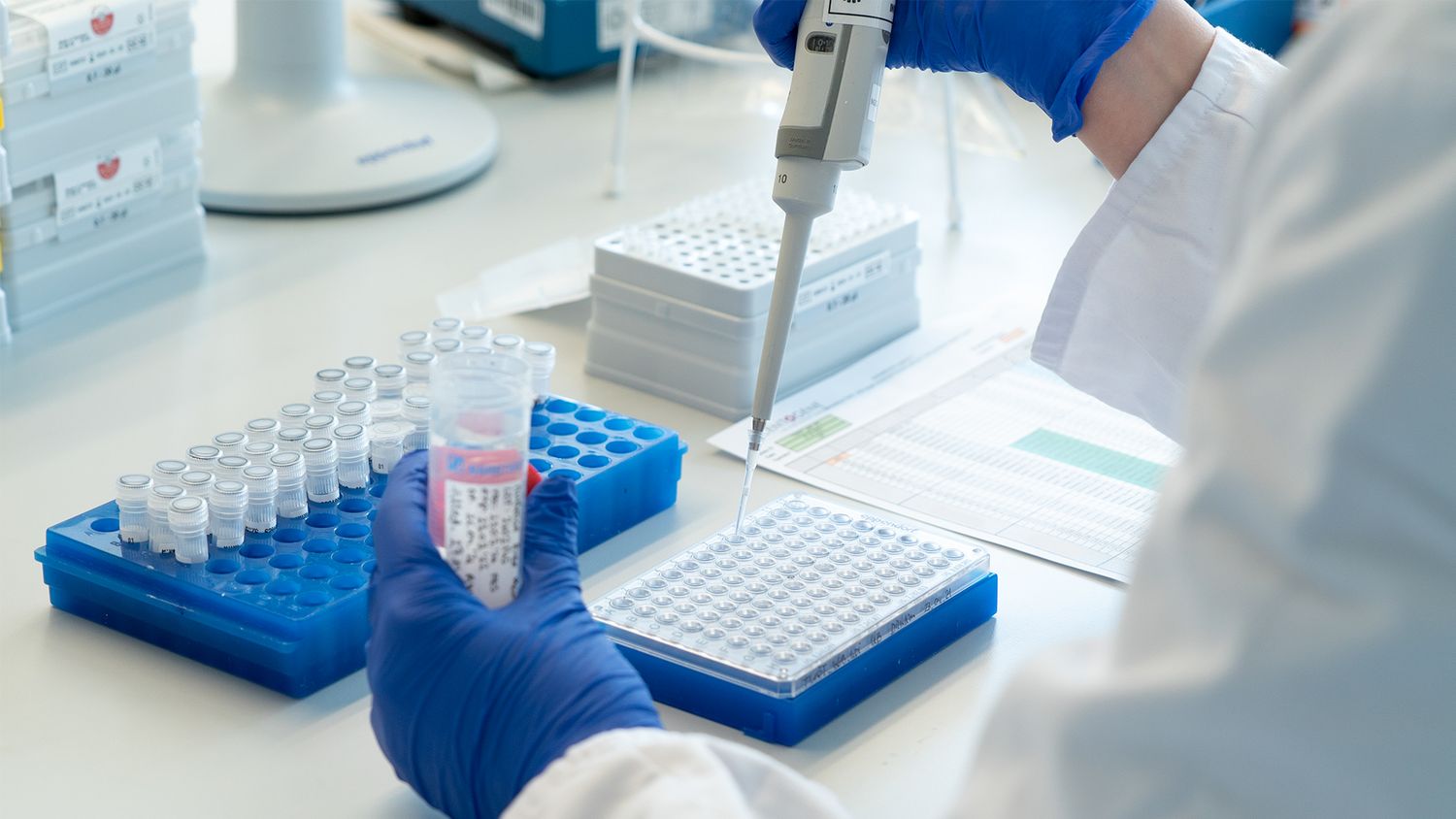
Integrated genomic and biochemical testing facilitates the decision on the pathogenicity of clinical variants leading to higher diagnostic yield
Biochemical testing allows for orthogonal confirmation of disease – accelerating the path to a diagnosis by avoiding stepwise testing
Multiomics provides a complete clinical picture – enabling the assessment of disease severity and thus accelerating personalized treatments
Additional Information & Resources
Clinical Exome Sequencing Targets Genes Associated with All Known Clinical Phenotypes
Watch our recorded webinar, “Clinical Exome Sequencing targets genes associated with all known clinical phenotypes to achieve high diagnostic accuracy” and find out how clinical utility meets patient […]
Solving the Diagnostic Riddle – Diagnosing Heterogeneous Genetic Disorders with Whole Exome Sequencing
Most of the disease-causing mutations that science has been able to identify so far are located within the exons. Whereas most genetic tests focus on a single gene or on a set number of predetermined […]
A Dx Success Story Showing the Clinical Utility of Genomic Testing as a First-Line Diagnostic Test
Genetic disorders are prevalent in many developing countries, but access to genomic testing is limited. In the frame of a charity testing program, CENTOGENE has provided diagnoses for more than 200 […]
Clinical Exome Sequencing – Results from 2819 Samples Reflecting 1000 Families
A study was conducted using whole exome sequencing (WES) to identify underlying pathogenic variants, or likely pathogenic variants, in 1,000 diagnostic cases from 54 different countries. Patients […]
Leveraging the CENTOGENE Biodatabank and Genomic Testing to Discovers Six New Rare Diseases
While technology has advanced over the past ten years, more than half of patients with genetic diseases remain undiagnosed, even after applying genome-wide diagnostic approaches. By performing deep […]
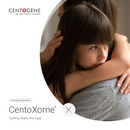
CentoXome – Product Sheet
CentoXome – Whole Exome Sequencing

CentoXome – Patient Information
CentoXome® – Whole Exome Sequencing (WES)
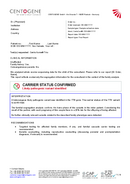
CentoXome Trio – Mother, Carrier Status Confirmed, Negative Secondary Findings
CARRIER STATUS CONFIRMED, Likely pathogenic variants identified
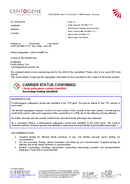
CentoXome Trio – Father, Carrier Status Confirmed, Positive Secondary Findings
CARRIER STATUS CONFIRMED, Likely pathogenic variants identified, secondary finding identified
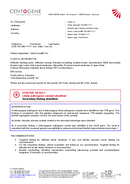
CentoXome Trio – Index, Myopathy Positive, with Positive Secondary and Carriership Findings
POSITIVE RESULT, Likely pathogenic variants identified, secondary finding identified
Get in Touch With Our Customer Support
Our consultation service is available in several languages.
+49 (0) 381 80 113 - 416
Mon. – Fri. 7 a.m. – 6:30 p.m. CET
Sat. 8 a.m. – 12 p.m. CET
References
1RARE Facts – Global Genes; 2NIH Genetics and Rare Disease (GARD); 3Cheema et al. 2020, PMID: 33083013; 4Clark et al. 2018, PMID: 30002876; 5Data on file at CENTOGENE; 6Gross et al. 2018, PMID: 30293986; 7Posey et al. 2019, PMID: 31234920; 8Schon et al. 2020, PMID: 32674947; 9Scuffins et al. 2021, PMID: 33495530;10Stark et al. 2016, PMID: 26938784;11Trujillano et al. 2017, PMID: 27848944;12Wagner et al. 2019, PMID: 31059585; 13Srivastava et al. 2019, PMID: 31182824; 14Manickham et al. 2021, PMID: 34211152; 15Liu et al. 2019, PMID: 31216405; 16Smith. et al.2019, PMID: 29760485; 17Vissers et al. 2017, PMID: 28333917; 18Wright et al. 2018, PMID: 29323667; 19Clinical Genome Resource. www.clinicalgenome.org [15/02/2022]; 20Miller et al. 2021, PMID: 34012069; 21Richards et al. 2015, PMID: 25741868



